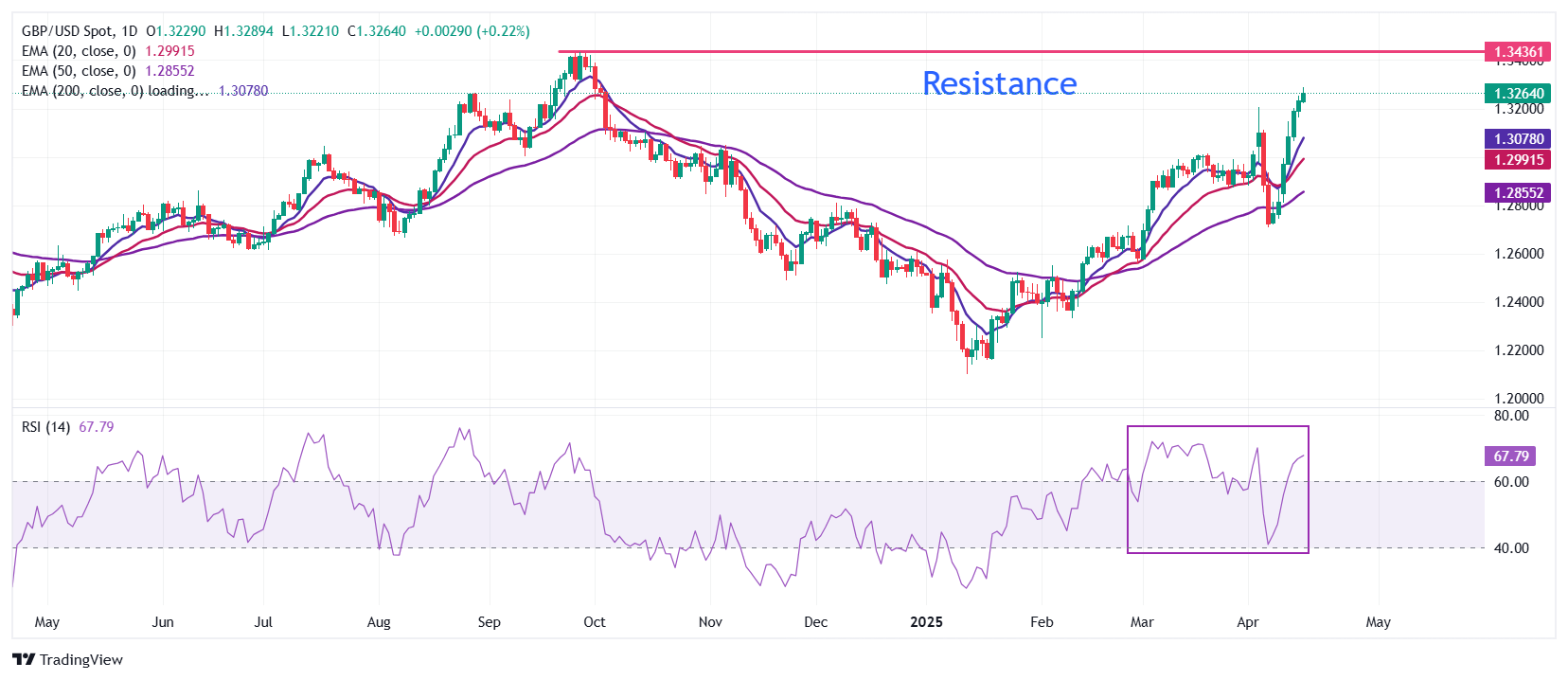Sterling under selling pressure as UK inflation cools
The weak consumer price index (CPI) data released by the United Kingdom in March put pressure on the pound against other major currencies.
Weak inflation and bleak employment prospects in the UK paved the way for the Bank of England to cut interest rates in May.
Investors seek new developments in deals between the United States and its trading partners.
On Wednesday, the British pound (GBP) faced selling pressure against major currencies other than the US dollar (USD) after the UK announced weaker-than-expected consumer price index (CPI) data for March.
Britain's Office for National Statistics (ONS) reported that the overall consumer price index (CPI) rose a moderate 2.6 percent year-on-year in February, down from expectations of 2.7 percent and 2.8 percent in February. Over the same period, core CPI (excluding volatile commodities such as food, energy, alcohol and tobacco) rose 3.4 per cent, in line with expectations and below the previous value of 3.5 per cent. Overall inflation rose 0.3 per cent month-on-month, below expectations and the previous value of 0.4 per cent.
The inflation rate in the services sector, which is closely watched by Bank of England officials, fell to 4.7 per cent from the previously announced 5 per cent. The decline in inflationary pressures in the UK is expected to reinforce market expectations that the Bank of England will cut interest rates at its monetary policy meeting in May.
In addition, the gloomy outlook for the UK labor market, coupled with the policy of increasing employers' social security contributions, which will take effect this month, will also force Bank of England policymakers to support loose monetary policy. In the Autumn Budget, Chancellor of the Exchequer Reacher Reeves raised employers' contributions to National Insurance (NI) from 13.8 per cent to 15 per cent.
Daily Summary Market Movements: Sterling Outperforms Dollar
The pound rose to near 1.3290 against the dollar during European trading on Wednesday. The GBP/USD exchange rate continued to rise strongly, while the US dollar (USD) fell across the line, with investors increasingly convinced that US President Donald Trump's economic policies will lead the economy into recession. The dollar index (DXY), which tracks the greenback against six major currencies, dipped near 99.50 after briefly recovering to 100.00 on Tuesday.
Although US President Donald Trump announced a 90-day suspension of reciprocal tariffs on all trading partners except China on the so-called "Liberation Day", investors believe that a trade war with the Asian giant is rarely enough to send shock waves through the economy.
Due to insufficient manufacturing facilities and lack of low-cost competitive advantages, the US economy cannot immediately offset the demand for Chinese imports. this situation will force us importers to raise the prices of substitutes for chinese goods, which will seriously weaken the purchasing power of us households. In theory, a decline in purchasing power leads to a decline in aggregate demand, which severely depresses economic growth in an economy whose 2/3 gross domestic product (GDP) growth depends on consumer spending.
Meanwhile, investors are looking to the White House to announce a deal with its trading partners. On Tuesday, U.S. Press Secretary Caroline Levitt said the Trump administration was discussing trade deals with "more than 15 countries" and that some of those agreements could be announced "soon.
On the trade deal with the UK, US Vice President JD Vance said in an interview with UnHerd on Tuesday that he was confident of reaching a trade deal with the UK. Vance said a trade deal between the two countries was "highly likely" given the president's affinity for Britain ".

The pound extended its seventh session of gains against the dollar, jumping to near 1.3300 on Wednesday. With all short-to long-term exponential moving averages (EMAs) trending upward, the short-term outlook for the currency pair is positive.
The 14-day Relative Strength Index (RSI) showed a V-shaped recovery, rising from 40.00 to 68.00, indicating strong bullish momentum.
On the downside, the 1.3000 psychological support will be the key support for the pair. On the upside, the three-year high 1.3430 will be a key resistance level.

























